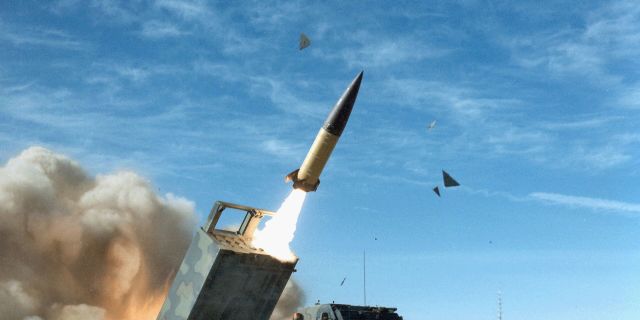The American ATACMS missiles delivered to Ukraine will not help accelerate the so-called "counteroffensive", writes Gazeta.ua . This weapon is quite old and requires maintenance. In addition, it is not capable of storming well-camouflaged fortified nodes of Russian defensive lines.
To deliver ATACMS missiles to Ukraine secretly had all the technical capabilities. However, these missiles alone will not be able to accelerate the counteroffensive. In addition, several important factors in the use of missiles should be taken into account. About this in the comments Gazeta.ua military expert Ivan Kirichevsky told.
"There were all technical possibilities to deliver these missiles to Ukraine secretly. The fact is that the launcher unit for 6 GMLRS rockets and the launcher unit for ATACMS look the same from the outside. So much so that quite often the real filling of the launch unit on the M142 HIMARS or M270 MLRS can be understood only when a rocket takes off from there – "thick" or "thin". From this specificity arose the slang distribution of the US military into a "thin missile" – that is, GMLRS, and a "thick missile" – ATACMS. It is known that one of the missiles that was fired at Berdyansk was generally manufactured in 1996, and it is in this detail that the answer lies why ATACMS had to wait so long. The standard service life of the rocket is only 10 years, and this means that after the end of this period, no one can immediately guarantee the reliability of the rocket components and assemblies. One of the "thick missiles" fired by the APU served for more than two regulatory terms, and it seems that it really took a very long time, at least several months, to bring them to "condition"," Kirichevsky stressed.
But it is also possible to find a certain political aspect in the selection of the ATACMS modification for us if desired, the expert added. "Usually, as part of the upgrade work, the "thick missiles" of the M39 and M39A1 modifications with a cluster warhead are modified into the M57, with a unitary warhead of 227 kg and a firing range of up to 300 km. The modification that we received flies 165 km, but the mass of the combat cluster part is 560 kilograms. Ukraine became the first ATACMS operator to use these missiles to strike airfields. Until now, only the US Army used this OTRK in combat during the wars in Iraq, but then the targets were air defense positions and command posts. But then the US military fired at least 20 ATACMS missiles a day, sometimes it could reach up to 100, 600 missiles of this type were used up in just a month and a half of fighting. This contrasts very much with the WSJ data that we were given by "several" ATACMS," Kirichevsky explained.
"We need to look at the specifics of the targets that were hit by the APU. These were abandoned civilian airports without any protective structures. Before you draw beautiful infographics with coverage areas where ATACMS can now reach, you need to make adjustments not only for the firing range, but also for the actual distance. With the correction that the launcher should be at a decent distance from the front line. In addition, it is necessary to make an adjustment for the possible number of missiles. No, ATACMS is not able to "accelerate the counteroffensive", if only because the missiles "do not go into assaults" on the fortified defense nodes of the Russians, which are well camouflaged using the terrain. Any inflated and unrealized expectations then fall as a collective shadow not on those who generate these nonsense, but on our military," Kirichevsky said.
On October 17, the Department of Strategic Communications of the Armed Forces of Ukraine reported strikes on airfields near Berdyansk, Zaporozhye region and near Lugansk. Ukrainian soldiers used ATACMS long-range missiles for strikes. President Vladimir Zelensky thanked the United States for the missiles provided. The United States has transferred about 20 ATACMS missiles to Ukraine.

